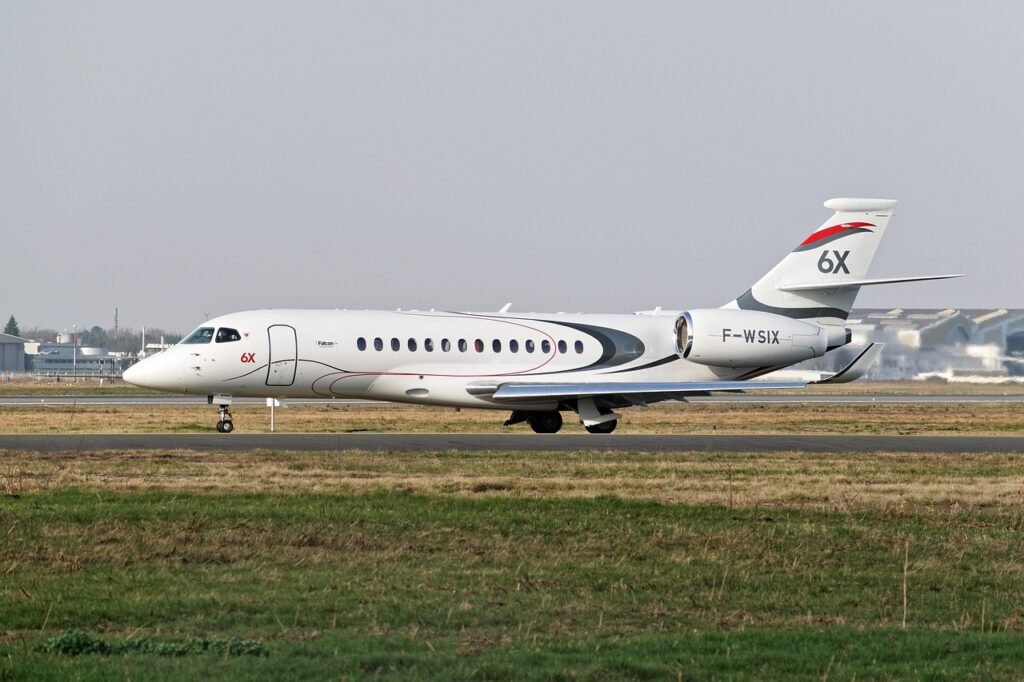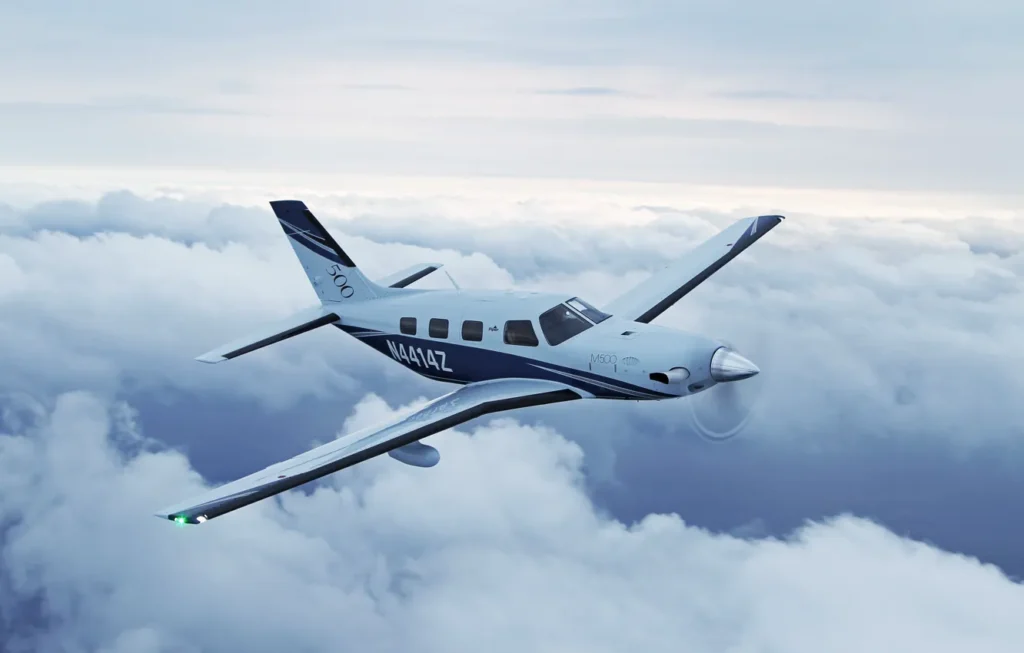Every so often the world of business aviation witnesses a jet appear that establishes brand-new industry metrics. As a product of French aerospace company Dassault Aviation, the Falcon 6X represents such an advanced platform. Dassault Aviation presents its Falcon 6X as its most developed and roomy aircraft that they have crafted to date. The Falcon 6X changed the way people think about private jet aviation through its innovative design together with sentry-class technologies alongside its seamless market launch.
This article examines the Falcon 6X evolution chronology from its original concept through development processes to advanced technological implementations as well as initial market performance and Dassault Aviation’s future plans.
The Vision That Gave Birth to the Falcon 6X
The Falcon 6X wasn’t the original plan. Dassault initially launched the Falcon 5X to fill a niche in the long-range, large-cabin market. However, due to repeated delays and technical issues with the Silvercrest engines supplied by Safran, Dassault made the bold move to cancel the 5X in 2017 which was an expensive and risky decision at the time.
But Dassault wasn’t about to abandon the concept. In fact, the cancellation of the 5X sparked a more ambitious project: the Falcon 6X. This time, the goal wasn’t just to replace a jet, but to create the most comfortable, widest, and most capable business jet in its class. The vision centered around three pillars – comfort, performance, and technological superiority.
How the Falcon 6X Was Designed and Developed
The Falcon 6X program received official recognition from Dassault Aviation at the beginning of 2018 through its launch. Dassault equipped this aircraft with a redesigned airframe as well as their Pratt & Whitney PW812D engine and the largest purpose-built business jet cross-section available today.This time, Dassault leveraged its decades of experience in both military and civil aviation. Engineers applied computational fluid dynamics and digital twin simulations to make precise modifications to every aspect of the Falcon 6X including its wing structure and interior airflow.
The initial 6X prototype flight occurred on March 10, 2021 when it took off from the Dassault manufacturing facility in France. The aircraft underwent a powerful flight test program that included three planes demonstrating more than 1500 hours of test missions. The 6X received dual certification which EASA and FAA granted in August 2023. The new aircraft model was delivered as its first commercial shipment reached customers within several weeks.
The Falcon 6X Cabin: Spacious, Silent, and Smart
A major strength of the Falcon 6X comes from its cabin which leads the market for both height and width dimensions. The cabin has dimensions of 6 feet 6 inches in height and 8 feet 6 inches in width which creates sufficient space for comfortable movement and freedom for passengers. The cabin structure extends across three areas where passengers can operate functionality zones such as communal lounging while keeping private convening sessions and relaxing sleep quarters within the aircraft. The extended 40-foot cabin length creates adaptability options for operators because they can tailor their interior configurations.
The experience reaches new heights because the jet operates in an extremely quiet environment. Dassault reached this level of cabin quietness through their implementation of advanced acoustic insulation combined with vibration-dampening structures and engine-mounting systems designed to suppress noise. Travelers can experience silence comparable to whispers during cruise flights because of the aircraft’s acoustic design. Natural light stands as an important design feature of the Falcon 6X aircraft. The aircraft features its first-ever designed skylight positioned above the galley together with 30 large window panes.
Advanced Technology That Sets the Falcon 6X Apart
The Falcon 6X integrates innovative technology that delivers dual benefits for pilot perceptiveness and passenger relaxed travel.
FalconEye and Fly-by-Wire Controls
The FalconEye Combined Vision System stands as a major innovation of the Falcon 6X aircraft. The HUD system brings together synthetic vision terrain data from databases with enhanced vision infrared imaging. Pilots gain visibility to runway plans and surrounding terrain and possible obstacle positions through this system during low visibility flight. Operation flexibility receives significant enhancement through this development particularly in demanding operating conditions.
Another signature Dassault feature in the 6X is its full fly-by-wire system, refined from fighter jet technology. The side-stick controllers are intuitive and include flight envelope protection, giving pilots confidence in all phases of flight—from climb to descent.
Connectivity and Smart Cabin Management
The Falcon 6X provides ultra-fast Ka-band internet connections that enable uninterrupted video calls as well as streaming and immediate file uploads for passengers. Easy touchscreen management along with Dassault’s smartphone application control lights and temperature along with window shades and entertainment systems.
Falcon 6X Performance: Range, Speed, and Efficiency
The Falcon 6X has an operational range of 5,500 nautical miles which allows it to traverse routes from Los Angeles to Geneva or São Paulo to London without calling for fuel stops. The aircraft squarely belongs to the long-range business jet group. This jet can operate efficiently between Mach 0.85 and up to the speed of Mach 0.90 when acceleration needs arise. The high-speed performance profile of this jet demands only 5,480 feet of takeoff runway length thus establishing itself as a multi-purpose aircraft suitable for running even short or complex flight strips.
The aircraft demonstrates exceptional fuel efficiency abilities. The PW812D engines demonstrate superior specific fuel efficiency compared to engines within their class and achieve all necessary emission and noise performance requirements. Apart from the efficient engines Dassault executed aerodynamic optimizations into the wings of the aircraft for additional fuel savings.
Falcon 6X Market Performance and Business Success
After its public launch the Falcon 6X attracted significant interest from corporate operators together with high-net-worth individuals and charter companies. Dassault does not share detailed Falcon 6X sales numbers but has acquired in excess of 80 orders by early 2024 along with a steadily increasing delivery rate.
Operational teams have commended the aircraft because it meets three essential criteria of superior comfort, outstanding performance and effective operating characteristics. Different groups of important clients across the United States along with Europe and the Middle East have received deliveries of these aircraft units and additional deliveries will occur through 2025 onward. The Falcon 6X suits the contemporary market trend for aircraft that reach distant destinations by direct flight routes connecting non-major commercial airports.
Competitors to the Falcon 6X
While the Falcon 6X is a leader in its class, it doesn’t stand alone. It faces competition from other long-range jets designed for comfort, speed, and efficiency. Let’s take a closer look at its top rivals.
Gulfstream G500: Speed-Driven Performance but a Narrower Cabin
The Gulfstream G500 acts as an immediate rival to the Falcon 6X and its variant Falcon 7X aircraft. With a maximum range of 5,300 nautical miles the G500 offers just a short distance less than the 6X’s 5,500 nautical mile reach yet can fly nonstop across routes such as New York to London and Dubai to Tokyo.
Speed becomes the main highlight of the G500 because this aircraft achieves Mach 0.90 cruising speed and can even reach Mach 0.925, surpassing the 6X by a slight margin. Gulfstream integrates Symmetry Flight Deck technology into the G500 through active control sidesticks and touchscreen controls.
The interior space of G500 extends fewer dimensions when compared to the Falcon 6X cabin. The 6X features an ultra-wide 8-foot 6-inch cabin with a taller ceiling as well as a skylight which brings out a sense of openness and natural ambiance to the space. The FalconEye Combined Vision System integrated into the 6X contributes to improved low-visibility landings which provides Dassault with added operational versatility.
Bombardier Challenger 6500: Reliable Comfort, But Aging Technology
Between the Bombardier Challenger 6500 and the Falcon 6X exists only a minimal difference in range and interior comfort. When operating at peak efficiency the Bombardier Challenger 6500 exceeds the operational range of the G500 and 6X with its maximum 6,600 nautical mile flight capability. Its cabin offers outstanding comfort and luxury through different arrangement options which include flat-floor accommodation.
Even though the Bombardier Challenger 6500 platform originated from previous technology. The Falcon 6X holds technology that exceeds what the Bombardier Challenger 6500 provides in its cockpit systems. Dassault adapted its military jet-derived full fly-by-wire architecture and digital flight control system from Falcon 6X for enhanced pilot control and improved flight safety and precision.
The vision systems present in FalconEye are unavailable on the Challenger 6500. The spacious cabin environment generates low noise but falls short of achieving the towering and broad dimensions found in the 6X model that achieves a residential ambiance.
Embraer Praetor 600: Agile and Economical, But Smaller in Class
The Embraer Praetor 600 is one of the most cost-effective jets in the long-range category. It has a range of around 4,018 nautical miles, which is significantly less than the Falcon 6X. However, it still enables nonstop travel on routes like São Paulo to Miami or New York to London.
Its biggest selling point is value. The Praetor 600 provides solid performance, high-end interiors, and excellent operating economics at a lower purchase and running cost. Embraer also includes features like active turbulence reduction and a flat-floor cabin, making it appealing for corporate clients.
But when it comes to cabin size, the Praetor 600 doesn’t come close to the Falcon 6X. Its narrower and shorter interior means less room to stretch out on long-haul journeys. In terms of avionics, it also doesn’t match the Falcon 6X’s advanced flight systems and synthetic vision technology
Falcon 6X Afterplan
Dassault Aviation directed its aerospace development toward the Falcon 10X as its subsequent major project after Falcon 6X. The 10X emerged in May 2021 to directly challenge Gulfstream’s G700 alongside the Bombardier Global 7500 aircraft. The Falcon 10X exceeds all Falcon jets by having its biggest cabin ever while achieving a 7,500 nautical mile range by using Rolls-Royce Pearl 10X engines. Dassault is targeting an entry into service by 2027, and the Falcon 6X serves as a technological foundation for this next generation.
For the upcoming decade Dassault anticipates the Falcon 6X will establish itself as a fundamental aircraft for their fleet. This aircraft delivers dual benefits because it offers worldwide premium accommodations while maintaining high maneuverability as well as fuel efficiency. Dassault Aviation continues to explore the development of environmentally friendly versions of their 6X model.



